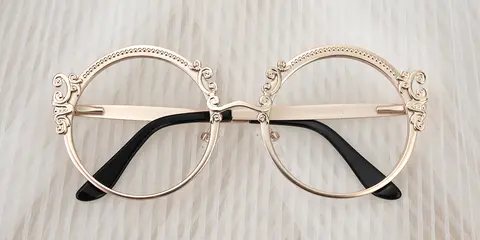Discover the Timeless Allure of Round Glasses: A Journey Through Style and History!
Round glasses have long been celebrated for their unique shape, which exudes a sense of sophistication and charm. Their enduring popularity transcends generations, having made appearances in various cultural contexts since their inception. These glasses are not just a functional accessory; they have become symbols of intelligence, creativity, and individuality. From the intellectuals of the Enlightenment to modern-day trendsetters, round glasses have carved a niche as both a fashion statement and a practical choice. In this article, we will explore the rich history behind round glasses, the myriad styles available today, and the numerous benefits they offer to wearers, ensuring that you understand why they remain a beloved choice for many.

The Historical Journey of Round Glasses
The origins of round glasses can be traced back to the late 13th century, when spectacles were first invented in Italy. These early designs featured simple round lenses held together by a rudimentary frame, primarily aimed at helping the aging population regain their sight. Over the centuries, the design evolved significantly. In the 18th century, they became a fashionable accessory among the intellectual elite, with figures such as Benjamin Franklin famously adopting round frames. The 19th century saw the introduction of more durable materials, such as metal and plastic, further expanding their appeal.
As we moved into the 20th century, round glasses experienced a renaissance, particularly during the 1960s counterculture movement. Iconic figures like John Lennon and various artists embraced these frames, associating them with free expression and rebellion against mainstream norms. The design's association with creativity and intellect has persisted, making round glasses a staple in the wardrobes of many artists, writers, and visionaries. Today, these glasses come in countless variations, but their historical roots remain a testament to their timeless allure.
Styles of Round Glasses
Round glasses today come in a variety of styles, catering to diverse tastes and preferences. The classic round glasses, often crafted from metal, feature thin frames and subtle designs, making them an ideal choice for those seeking a timeless look. Many people, including my friend Sarah, have found that these classic frames complement their vintage-inspired outfits perfectly, adding a touch of nostalgia to their style.
On the other hand, modern interpretations of round glasses include bold colors, oversized frames, and unique materials such as acetate or wood. This avant-garde approach allows wearers to express their individuality and personal style. For instance, a friend of mine recently switched to a pair of vibrant blue round glasses, which have become a conversation starter and a defining feature of her eclectic wardrobe. Additionally, various lens options, including tinted or mirrored lenses, can enhance the aesthetic appeal and provide functional benefits.
The Benefits of Wearing Round Glasses
Wearing round glasses offers numerous practical and aesthetic benefits. One of the primary advantages is their versatility; round glasses can complement a wide range of face shapes, from square to oval. This adaptability has made them a go-to option for many individuals seeking eyewear that enhances their facial features. My colleague, Tom, who has a square jawline, often shares how round glasses soften his features and bring balance to his look.
In addition to their flattering fit, round glasses exude a timeless charm that can elevate any outfit. Whether paired with business attire or casual wear, they add a layer of sophistication and flair. Furthermore, round glasses can often serve as a statement piece, drawing attention and sparking conversations. Their unique shape has the power to highlight a person's personality, making them a popular choice among those who value self-expression.
Round Glasses in Popular Culture
Round glasses have made significant appearances in popular culture, often associated with iconic personalities who have left an indelible mark on society. From the whimsical designs featured in films to the serious demeanor of characters portrayed by actors like Woody Allen, round glasses have become symbolic of intellect and creativity. In the art world, renowned painters like Claude Monet often depicted subjects wearing round spectacles, further cementing the frames' association with artistic expression. These cultural connections have helped maintain the allure of round glasses, ensuring they remain relevant in today's fashion landscape.
Embracing the Timeless Appeal of Round Glasses
In summary, round glasses are more than just a functional accessory; they represent a rich historical journey and an array of styles that cater to diverse tastes. Their versatility and timeless charm make them a beloved choice for many, while their presence in popular culture highlights their significance in personal expression. As you consider adding round glasses to your eyewear collection, take a moment to appreciate the unique charm they bring to your look and the lasting legacy they carry through time. Embrace the allure of round glasses, and let them be a reflection of your style and individuality.







